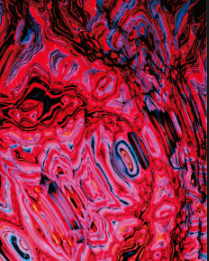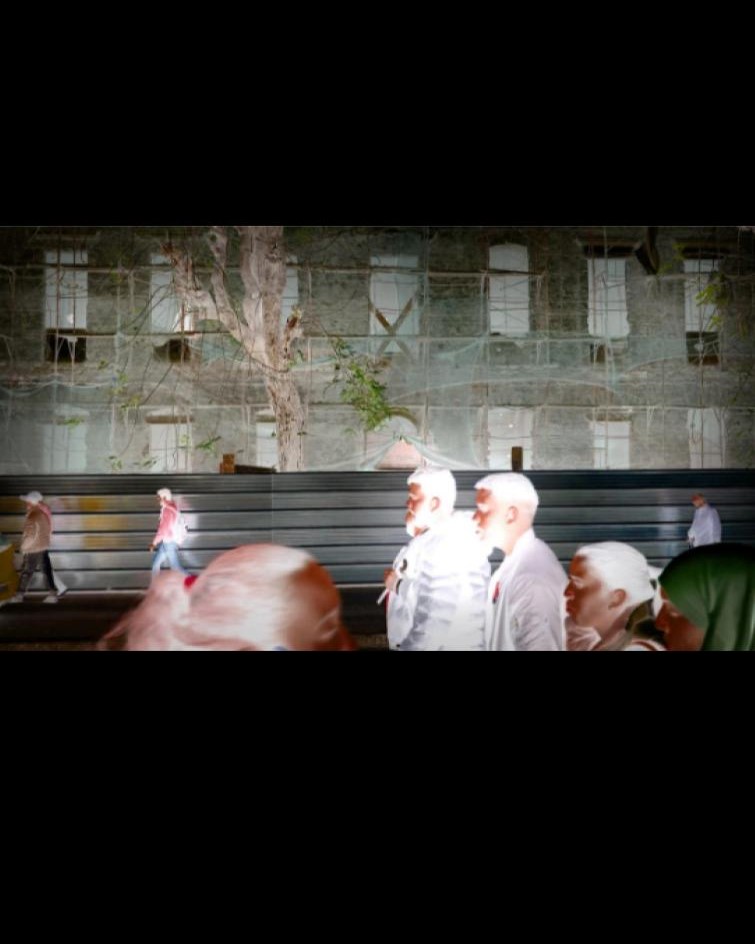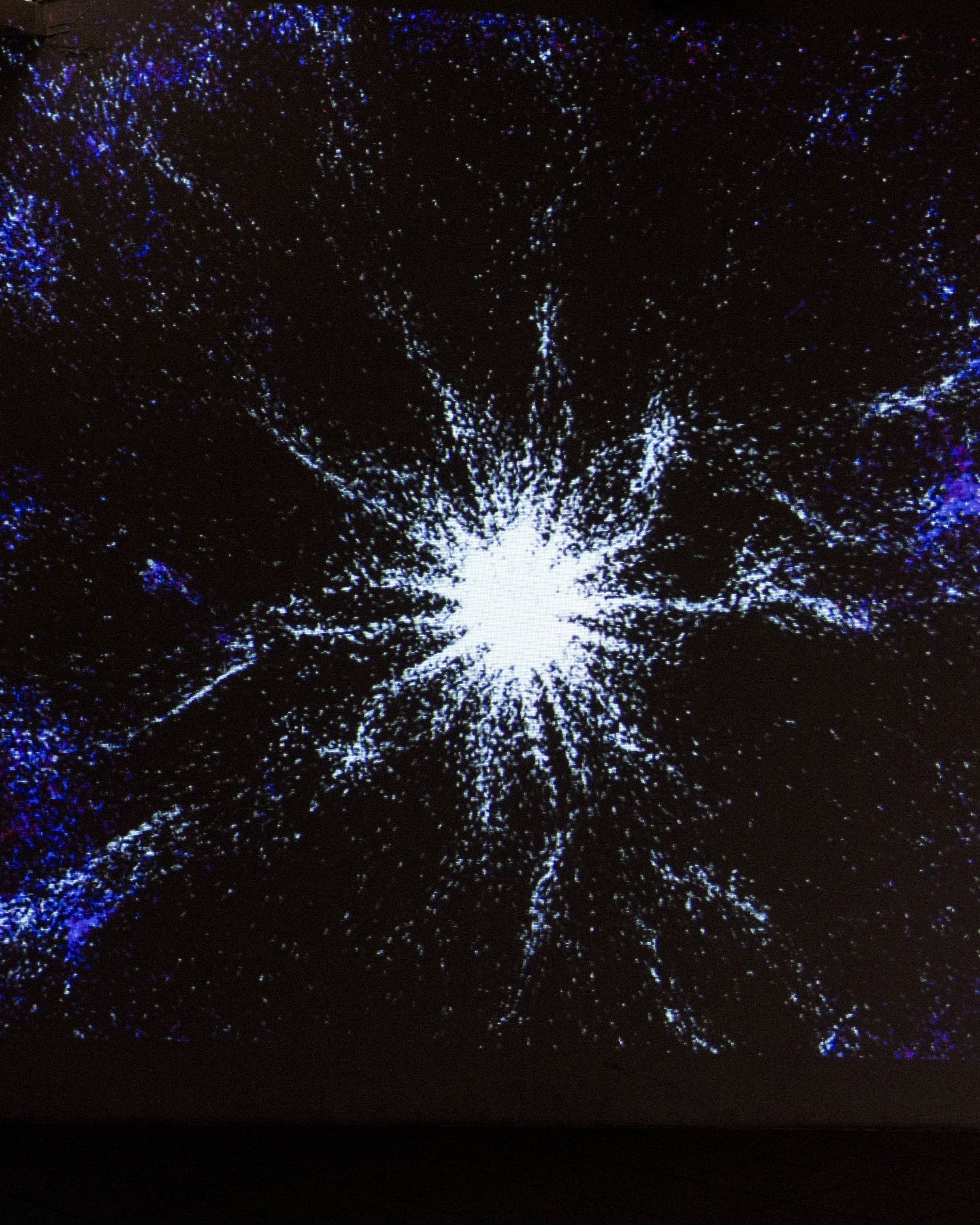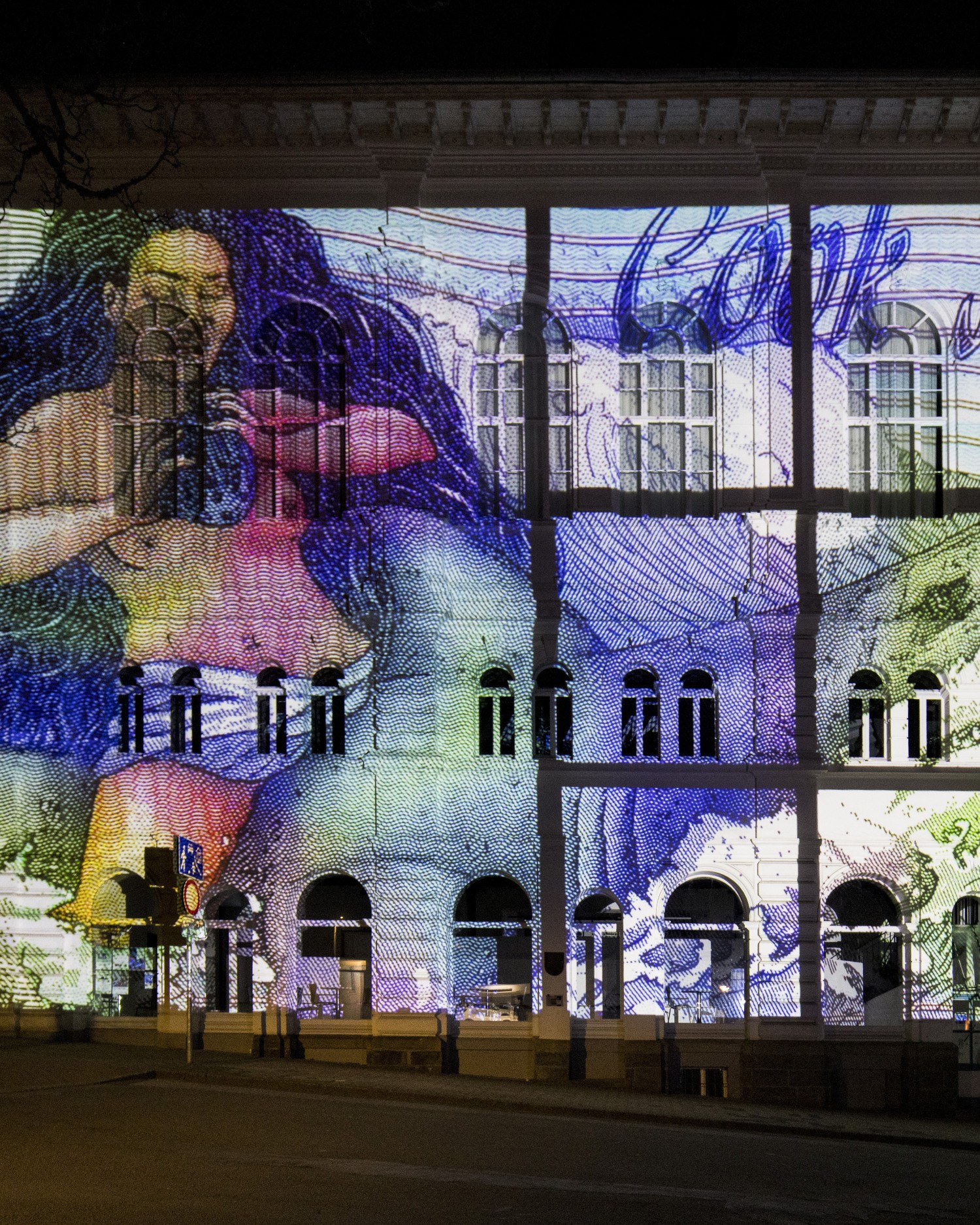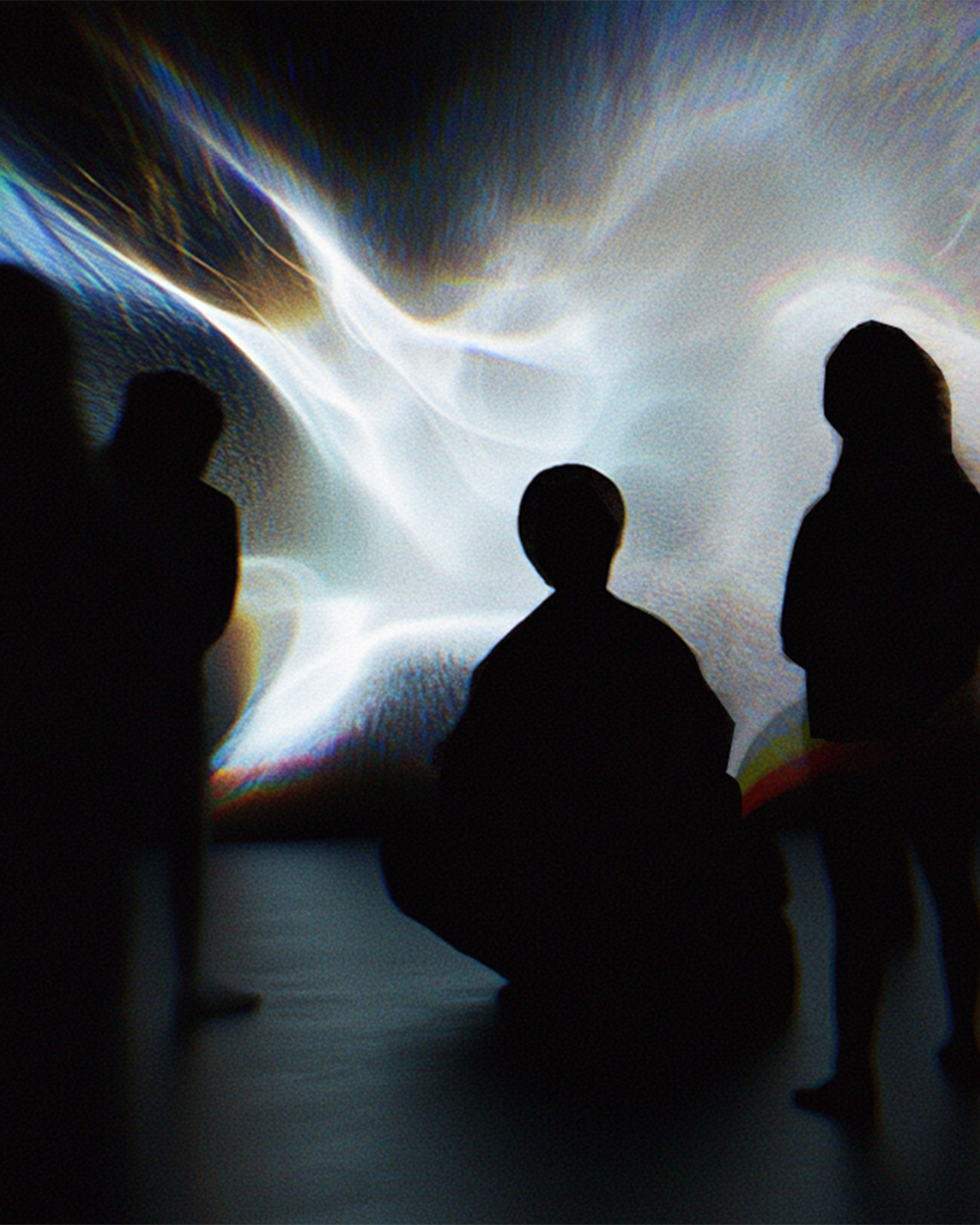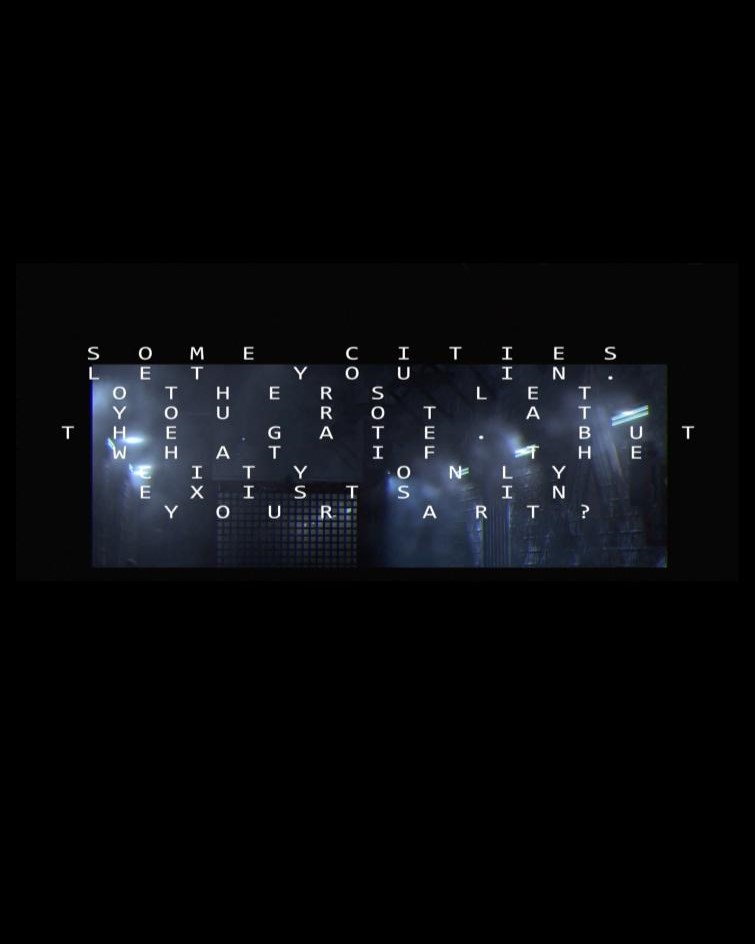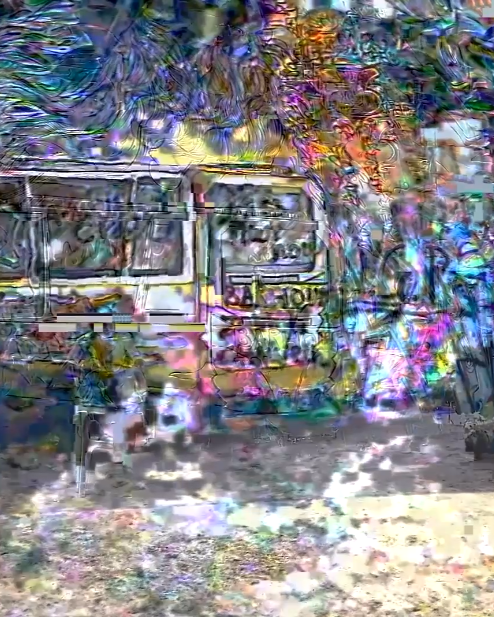Circuits of Exhaustion
Video Projection
2024
This two-part video work explores energy use and the cost of routine in urban life. The first part, filmed in the early morning in the city center, shows people during their commute. An added visual layer follows their movement,
representing energy in motion and the effort tied to economic need.
The second part, filmed in the late afternoon in a park, shows people after work. Their bodies move less. Some sit or lie down. A rotating element — a wheel — turns in the frame, marking the ongoing cycle of effort and return.
This repetition reflects a structure where rest does not lead to recovery.
A continuous heartbeat sound links the two scenes. It rises and slows, creating a rhythm that mirrors human presence inside systems that do not pause. The work asks how urban environments use energy — not just
electricity or fuel, but human time, focus, and breath.
It suggests that without new ways of organizing life — through social support, shared space, or other forms of renewal — the cycle remains closed. The piece reflects on what remains invisible in cities: the strain behind movement, the gap between function and care, and the need for energy that does not deplete the body.
The artwork relates to the theme by focusing on the unseen effects of urban routines on the body and mind. It shows how the city shapes movement, energy, and rest through cycles of work and transit. By contrasting moments of activity and depletion, the work reflects on what becomes invisible in cities — exhaustion, repetition, and the cost of being present in systems that demand constant output. It challenges the idea of urban progress by asking what forms of energy, support, or presence are missing in daily life. In doing so, it aligns with the theme of visibility, memory, and the emotional structures that exist beneath the surface of the built environment.
INVISIBLE CITIES
